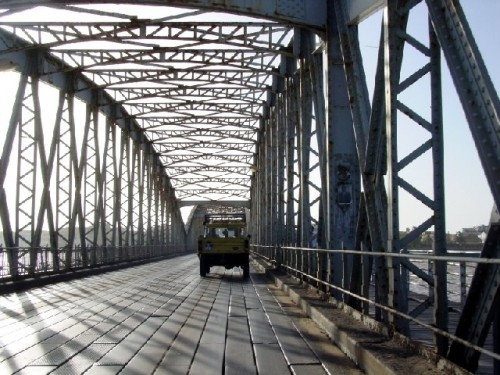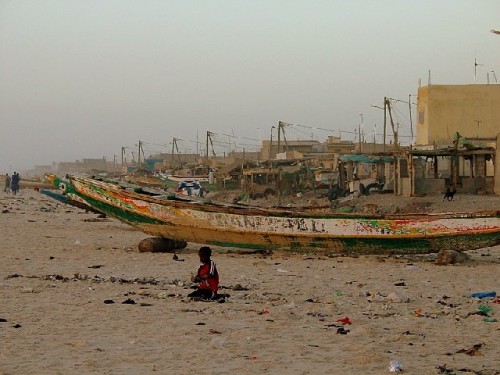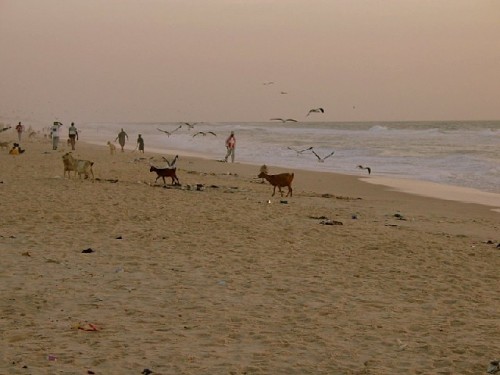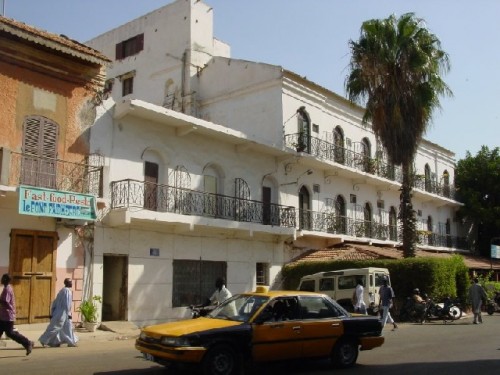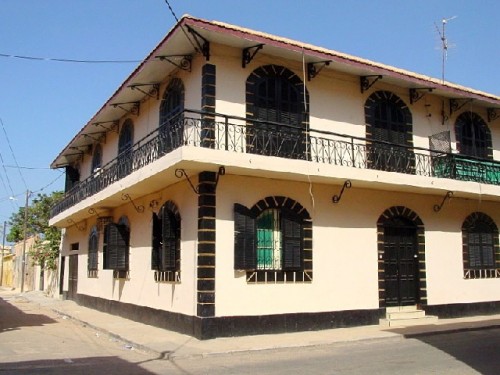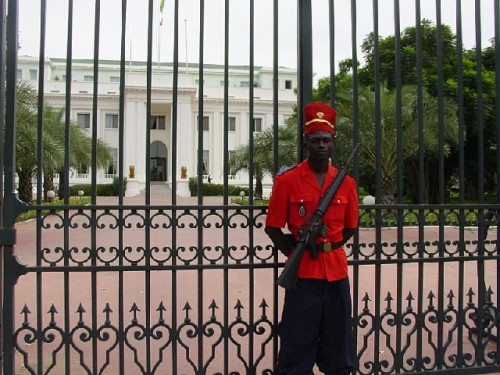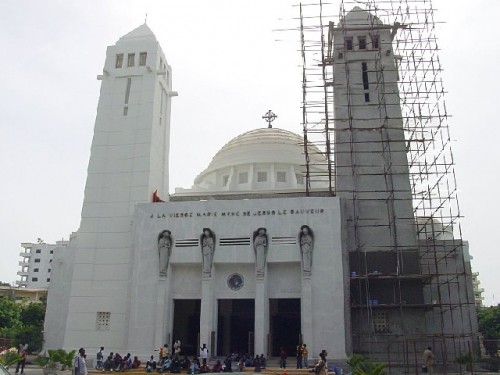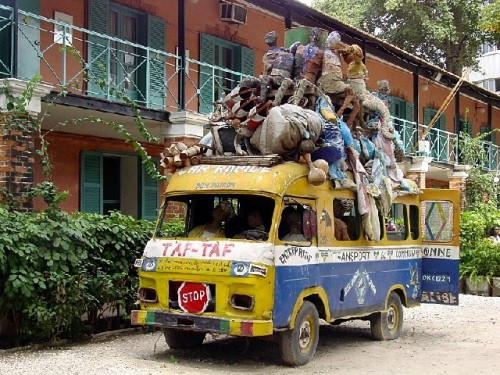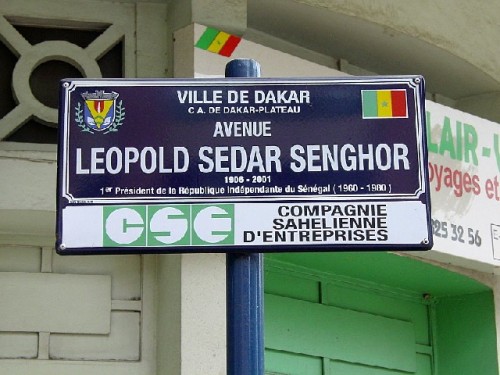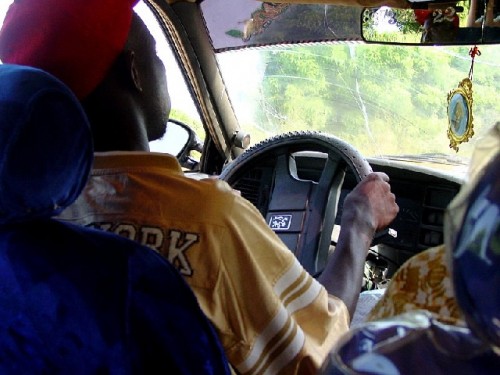Senegambia: Africa for Beginners? Part Two
An Eye-Opening Tour in West Africa
By: Szabolcs Mosonyi - Nov 26, 2007
Dakar is the perfect example of why first impressions often don't last. On our first day, after the initial shock of wandering unfriendly streets, it was only tranquil Gorée that shone as our beacon of hope that we could actually grow to like this city.
However, a walk on another day revealed faces of Dakar I had never thought existed. Just a few blocks from some dreary high-rises there was a Dakar of Viennese-style coffeehouses, beauty parlors, tree-lined streets with fountains, some of the fanciest-looking street signs I've ever seen, a great French Cultural Institute that runs remarkable exhibitions. There was a bar where Europe and Africa mingles, an immensely elegant presidential palace and a huge cathedral in this predominantly Muslim country.
At the time, this oasis of the West was paradise found. In retrospect, it is strange why we needed things reminiscent of home to feel good in Africa. But we did, and now I see how this multi-sidedness of Dakar makes it a great city. It is quintessentially African the way it is. There are the remnants of a grand colonial history in many fine buildings and a sophisticated European neighborhood. There are the challenges of contemporary Africa in the visible poverty of shabby streets, crumbling infrastructure and all the hustlers. And there is the hope of the future in a bustling nightlife with trendy bars and restaurants, new office buildings and a general sense of normalcy without soldiers and roadblocks at every corner.
All in all, Dakar is an extraordinary city but is not a cheap date. You need to dig deeper to appreciate its charms, but then again, it makes you feel like you've earned it.
Senegal boasts another great city, albeit in very different ways. About a hundred miles to the north, right on the border with Mauritania, is Saint-Louis, which in many ways is the anti-Dakar. The former is harsh, Saint-Louis is sophisticated. Dakar is dynamic and thumping with energy, Saint-Louis is almost comatose. Dakar is ever-changing; Saint-Louis hasn't changed much for a century.
Above all it is a picturesque little place. Situated on the Atlantic coast, Saint-Louis has some dusty suburbs on the mainland with crumbling one-story buildings which all of a sudden give way to a graceful bridge, Pont Faidherbe, which could not look more out of place. It is an attraction on its own, having been planned by Alexander Gustave Eiffel (1832-1923) and originally intended to span the Danube. Now it connects the shabby mainland area to a small island, which is the historic center of Saint-Louis and a UNESCO World Heritage Site. It is the oldest French settlement on the entire continent and boasts superb colonial architecture, a legacy of the days when Saint-Louis was the capital of French West Africa. While it was reduced to a provincial backwater when the French left, the city is now experiencing a renaissance largely due to tourism. This means that its faded charm may soon change.
Many of the houses have been painstakingly restored and government money is pouring in with the aim of turning Saint-Louis into a major tourist destination. Restaurants, artisan shops and art galleries are already mushrooming, and it will probably not be long before busloads of tourists start coming.
Unfortunately, the tourists will probably miss a not so obvious but nevertheless fascinating sight, the Langue de Barbarie. Just a few blocks from the tranquil center but worlds apart, this narrow stretch of land shelters the island from the ocean and is the true African heart of the city. This is the home of the fishermen, who return by the hundreds around sundown, their colorful pirogues turning the coast into a festival. These brightly painted long boats then rest along the coast until the next morning when they again swarm out to sea. Many visitors would still skip this place because it redefines chaos as we know it. There are so many people, so much bustle, so many colors and rhythms, one gets dizzy trying to take it all in.
The air is thick with the smell of drying fish, smoke, and exotic spices as women cook in the ramshackle houses. Children play soccer on the beach, while goats and seagulls feast on garbage and dead fish left on the sand. Garbage is a common sight everywhere, the dead fish less so.
Chatting with local fishermen, we learned that Japanese ships often turn up a couple of miles off the coast and use detonators to kill scores of fish, which they later collect with huge nets. This not only dramatically reduces the catch for the fishermen in their traditional pirogues, it also means that mangled fish carcass often gets washed ashore. Our "friends" gave us interesting insight into their everyday challenges, although the conversation again ended with us buying stuff for them. They were especially creative, stressing that they really did not want our money, and asked us to go with them to the nearest shop and buy some food for their children. When we got to the shop, all they wanted was coffee (still maintaining it was for their kids) in quantities that would have kept an extended family awake for about a week.
Having had our fill of urban Senegal, we felt it was time to unwind. So we took a cab to the Gambian border. A cab? Strange as it seems, for long-distance travel, it is often the most sensible option.
For someone coming from the world of schedules, real-time traffic info, online bookings, and signposted highways, Senegambian transport takes some getting used to. Public transport is virtually nonexistent, limited to a chaotic city bus network in Dakar, the government-owned GPTC buses of Gambia, and a handful of ferries. With few people owning cars, transport is mostly by private taxis, bush-taxis (taxi-brousse in French, normally a Peugeot 504 with seven seats), minibuses, "express buses", alhams (so called by the omnipresent "Alhamdoulillah" signs on them), and all kinds of vehicles that in any other part of the world would be found in museums.
Even if there is a sort of scheduled service, it means going to the gare routiére, which is the closest Senegal and Gambia come to having a bus station and is, in itself, enough to discourage anyone from traveling around the country. It is basically a dusty parking lot with countless minibuses and bush-taxis and even more touts. Destinations are yelled out; buses and taxis leave when full. This can easily double the journey time as there is no way to know when that happens. Furthermore, the African definition of full is cramming in as many people as physically possible (remember: one seat is two seats).
Because of this cramming in public transportation the most convenient way of traveling is by private taxi, but this still puts the word "comfortable" in a new perspective. The ubiquitous yellow taxis are usually more than twenty years old and look like they have never been cleaned. The seatbelts left black stripes across my T-shirts! Most taxis have run at least a million kilometers, their odometers never work, windshields are invariably broken, and parts (headlights, mirrors, door handles, switches) are often missing. We've been in all kinds of great cars: One was pushed by five guys to get the engine started, another had rear doors that wouldn't open, while a third took NINE hours to cover 200 miles.
The roads are mostly tarred (at least in the coastal regions) and with the exception of some badly potholed sections, are generally well-maintained. The road between Dakar and St Louis is excellent, having been built with EU money.
Slowing down is usually not an option, so when the road is bad, drivers tend to drive with one wheel on the asphalt and one on the dirt-track beside it. And driving habits vary greatly. Most drive like they have a death wish; while one driver was so slow I wanted to poke him. While most people just chill out all day, behind the wheel even two seconds is too much waiting. We saw drivers honking in a traffic jam just because the guy in front of them stopped for a few seconds to buy a pack of groundnuts from one of the roadside vendors, instead of moving forward a few inches.
When we finally made it to the Gambia, we promised to stay put until we had a few days of unwinding. This is a promise we didn't keep, as will be discussed in the next chapter of our travel log.

